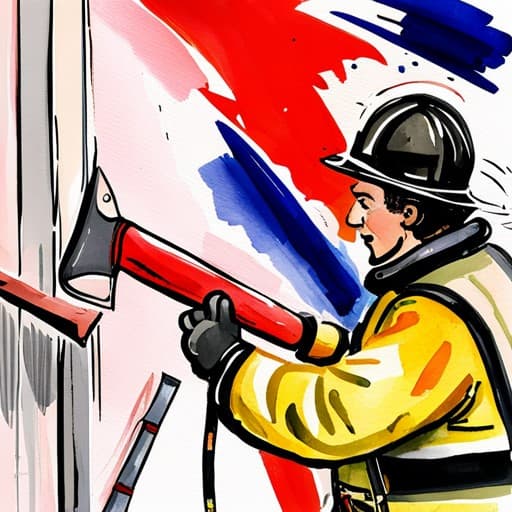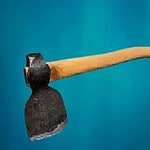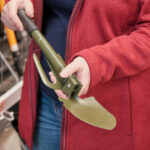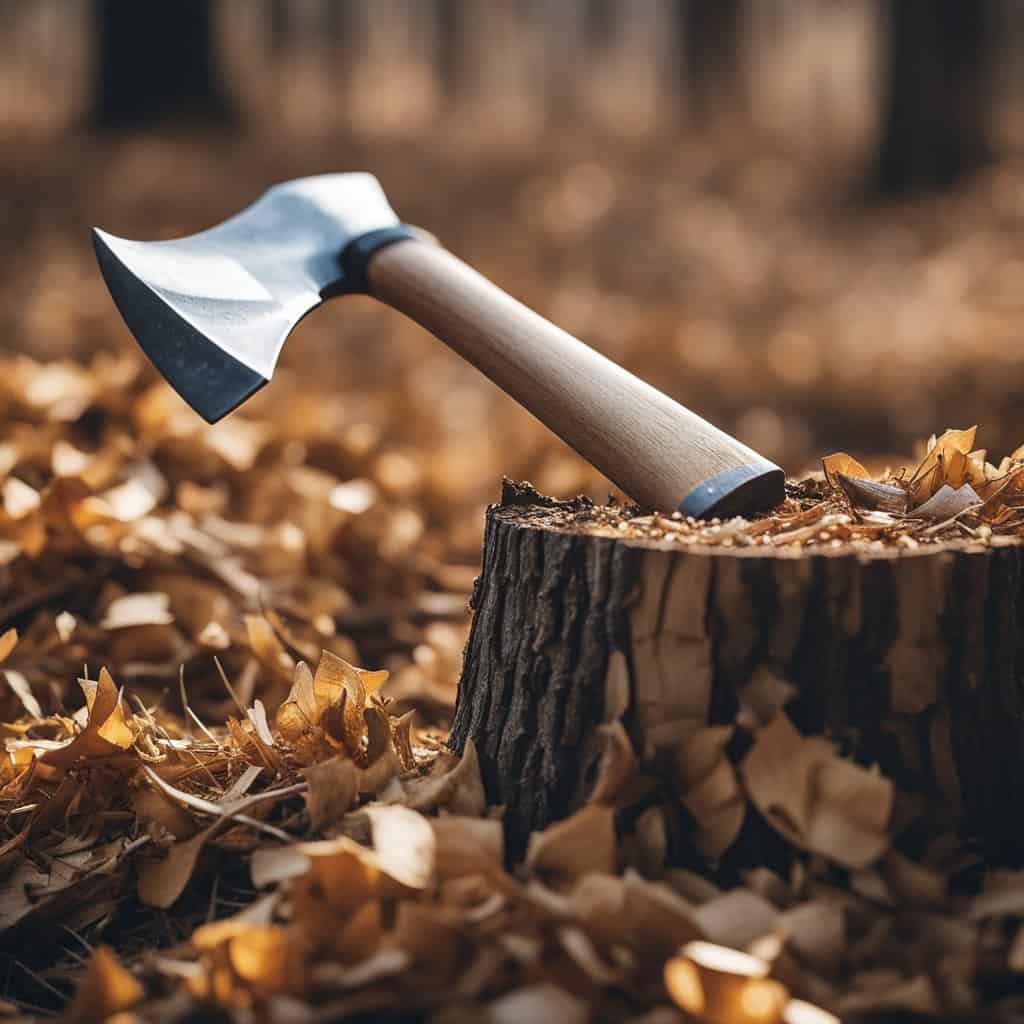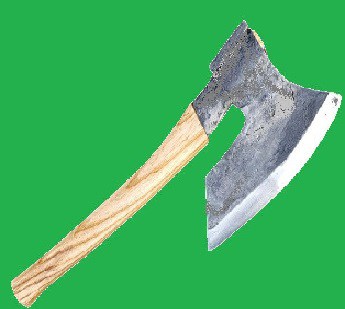The flat head axe is a versatile tool used for centuries as its design allows for efficient chopping and splitting of wood, making it a popular choice among outdoors enthusiasts and professionals alike. One of the key benefits of the flat head axe is its ability to cut through wood effortlessly. The flat shape of the head allows for a wider cutting surface, which means that each swing can remove more wood than a traditional axe.
Table of Contents
History and Evolution of Flat Head Axes
Flat head axes have a rich history that dates back to the early days of human civilization. The first flat head axes were stone, used for various purposes, including hunting, chopping wood, and building structures.
Over time, the design of flat head axe evolved, and metal became the primary material used to make them. The first metal flat head axes were made by blacksmiths, who forged them by hand. These axes were heavy, durable, and used for various tasks, including chopping wood, clearing land, and building structures.
In the 19th century, machine made fire axes became popular, and firefighters used them to break down doors and walls during emergencies. These axes were designed with a flat head, which was ideal for breaking through tough materials.
Today, flat head axes are still widely used by firefighters, as well as by people who work in the forestry industry and those who enjoy outdoor activities like camping and hiking. Modern flat head axes are made from steel and designed to be lightweight, durable, and easy to use.
Types of Flat Head Axes
Firefighter Flat Head Axes
Firefighter flat head axes are used in emergencies requiring quick and effective entry as the flat head effectively breaks through doors, windows, and other obstacles. These axes are often used with other firefighting tools, such as halligan bars and sledgehammers, to access buildings and rescue trapped occupants.
Forcible Entry Flat Head Axes
Forcible entry flat head axes are similar to firefighter axes but are designed specifically for law enforcement and military applications. They feature a flat head used to break through doors, windows, and other obstacles and have a pick on the opposite end for prying and digging. These axes are used in SWAT-type operations, hostage rescue situations, and high risk scenarios.
- Pickhead axe: A type of axe with a pointed pick on one end and a flat blade on the other used in forestry and landscaping applications.
- Fire axe: A type explicitly designed for firefighting applications, featuring a pick on one end, a flat blade on the other, and a long handle for extended reach.
Whether you are a firefighter, law enforcement officer, or industrial worker, a flat head axe is designed to meet your specific needs.
Components of a Flat Head Axe
Axe Head
The axe head is the most critical part of a flat head axe. Steel is the most common material used to produce flat head axes. The steel used is called tool steel which is a high carbon grade steel that is heat treated to provide excellent hardness and durability as it can withstand high impact and resist wear and tear, making it ideal for axe heads.
Handle
A flat head axe’s handle gives the user the leverage and control needed to use the axe effectively. Handles are made from a variety of materials, including wood and fiberglass. Hickory wood is the most popular material used to produce axe handles. It is strong, durable, and shock-resistant, making it ideal for axe handles. Other types of wood, such as ash and oak, are also used in axe handles.
Fibreglass handles, on the other hand, are lighter and more flexible, making them easier to use for extended periods. It is an excellent alternative to wood, as it does not crack, splinter, or rot. Fibreglass handles are also resistant to impact and can withstand harsh weather conditions.
Grip
The grip of a flat head axe is what allows the user to hold onto the axe securely. Grips are made from rubber or leather. Rubber grips are typically more comfortable and provide a better grip, while leather grips are more durable and can provide a better grip when wet.
Techniques and Usage of Flat Head Axes
Chopping
The chopping technique with a flat head axe is about positioning and motion. The user stands with their feet shoulder width apart, and the axe is held with both hands, one hand on the handle and the other on the head. The user then swings the axe in an arc above their head, bringing it down onto the target with force and accuracy. The angle of the swing should be such that the axe hits the target at the right angle to chop through it effectively.
Smashing
Smashing with a flat head axe is a technique that requires a lot of force and precision. The axe is held with both hands, one on the handle and the other on the head, before swinging the axe down onto the target with as much force as possible. The angle of the swing should be such that the axe hits the mark with maximum power to smash through it.
Penetrating
The penetrating ability of a flat head axe is one of its most essential features. To use the axe for penetrating, the user should hold it with both hands, one hand on the handle and the other on the head, and drive the head of the axe into the target with force and accuracy. The angle of the swing should be such that the axe hits the target at the right angle to penetrate it effectively.
Ventilation
Ventilation is an important technique when it comes to firefighting. To use a flat head axe for ventilation, the user should hold it with both hands, one on the handle and the other on the head, and strike the target with force and accuracy. The angle of the swing should be such that the axe hits the target at the right angle to create a hole in the surface, allowing for ventilation.
Overhaul
Overhaul is a technique used in firefighting to ensure that all fires are fully extinguished. To use a flat head axe for overhaul, the user should hold it with both hands, one hand on the handle and the other on the head, and use it to break apart any remaining debris and check for hot spots. The angle of the swing should be such that the axe hits the target with enough force to break apart any remaining material.
Safety Measures While Using Flat Head Axes
Using a flat head axe can be a great way to get some work done quickly and efficiently, but it’s important to remember that it can also be dangerous. Here are some safety measures to keep in mind when using a flat head axe:
- Always wear personal protective equipment (PPE), such as eye protection, gloves, and sturdy footwear.
- Make sure the axe head is securely attached to the handle before use.
- Use the axe on a stable surface and ensure plenty of clearance around you.
- Keep your hands away from the blade, and never try to catch a falling axe.
- Keep your feet shoulder-width apart when swinging the axe, and maintain a firm grip on the handle.
- Never swing the axe over your head or in a way that could cause an overstrike.
- Take frequent breaks to avoid fatigue and maintain focus.
Remember, safety should always be your top priority when using any tool.
Brands of Flat Head Axes
Regarding flat head axes, several brands on the market are worth considering. Here are a few of the most popular:
Fire Hooks Unlimited
Fire Hooks Unlimited is a company that specializes in making firefighting tools, including flat head axes. Fire Hooks Unlimited’s flat head axes come in a range of sizes and styles for your needs.
Fire Axe Inc.
Fire Axe Inc. is another company that makes flat head axes for firefighters and other professionals. Their axes are known for their quality and durability and are designed to be easy to use and maintain. Fire Axe Inc. offers a range of flat head axes, including traditional and modern designs.
Maintenance and Durability of Flat Head Axes
Taking care of your flat head axe ensures its longevity and effectiveness. Regular maintenance can also help prevent accidents and injuries. Here are some tips on how to maintain and increase the durability of your flat head axe:
1. Sharpen the Blade: A sharp blade is essential for a flat head axe to function correctly. Dull blades can cause the axe to bounce back or slip, which can be dangerous. Sharpen the blade regularly using a sharpening stone or file, ensuring you maintain the original angle of the blade and use a honing oil to prevent overheating. To learn the basics of sharpening an axe our guide Sharpening An Axe Basics will provide a great overview.
2. Clean the Axe: After each use, wipe down the axe with a dry cloth to remove any dirt or debris. Use a solvent to remove any sap, resin, or other debris on the blade. Avoid using water, as it can cause rusting. After the axe is dry, you can apply oil to the blade and handle to prevent rusting and keep the wood from drying out.
3. Store the Axe Properly: Store the axe in a dry place, away from moisture and direct sunlight. Hang it on a wall or place it in a sheath to protect the blade and prevent accidental injuries.
4. Check for Balance: A balanced axe will be easier to handle and reduce fatigue or injuries. Check the balance of the axe by placing the handle on a flat surface and seeing if the blade touches the surface. If the blade is off balance, adjust it by adding or removing weight from the handle.
5. Use the Axe for its Intended Purpose: Using the axe for tasks it’s not intended for can cause damage to the blade or handle, reducing its durability.

